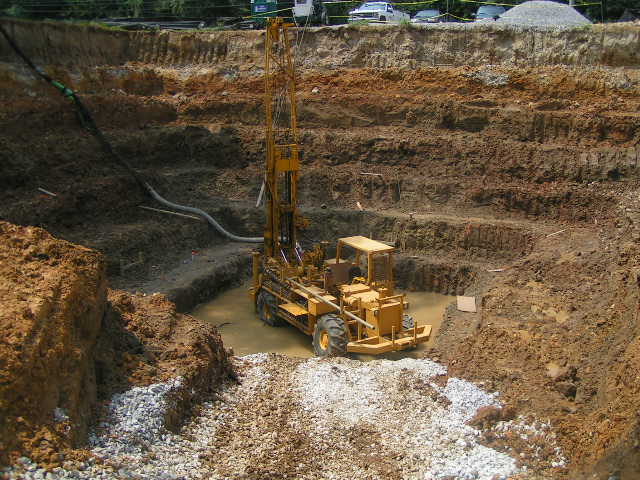Experienced Geotechnical Geologist for In-Depth Ground Investigations
Experienced Geotechnical Geologist for In-Depth Ground Investigations
Blog Article
Exactly How Consulting Engineers Enhance Geotechnical Engineering Projects: Insights Into Their Competence, Methodologies, and Collaborative Approaches
Consulting designers are critical in enhancing geotechnical engineering tasks, using their specialized understanding to navigate the intricacies of subsurface problems. Their methods include a series of site investigation techniques, consisting of Standard Infiltration Tests (SPT) and Cone Infiltration Tests (CPT), which notify vital decisions throughout the design and building and construction phases. Their joint methods foster interaction among varied task stakeholders, ultimately shaping the project's trajectory. As we take a look at the multifaceted functions these specialists play, it ends up being clear that their payments extend beyond technological know-how, prompting a better check out the implications for project success.
Function of Consulting Engineers
The proficiency of seeking advice from engineers in geotechnical design is basic to the effective execution of construction tasks. These specialists play a pivotal role in examining soil and rock properties, which are critical factors influencing design and construction decisions. By carrying out complete site examinations, speaking with designers accumulate vital data that informs the layout process, making certain projects are improved secure and ideal ground.
Consulting designers also supply invaluable insights right into threat monitoring (geotechnical geologist). They determine possible geotechnical hazards, such as landslides, soil liquefaction, and negotiation concerns, making it possible for stakeholders to implement reliable reduction methods. Their experience help in enhancing foundation designs, which can bring about substantial cost financial savings and boosted safety and security
Furthermore, consulting designers function as a vital web link between project proprietors, designers, and professionals. Their ability to convert intricate geotechnical data into workable suggestions fosters cooperation and facilitates informed decision-making throughout the task lifecycle. This multidisciplinary method not only boosts project efficiency however additionally makes sure compliance with regulative standards and ideal practices.
Trick Approaches in Geotechnical Design

One primary methodology is site examination, which includes conducting field examinations and lab analyses to gather data on subsurface problems. Methods such as Criterion Infiltration Screening (SPT) and Cone Infiltration Screening (CPT) are widely utilized to assess soil stratigraphy and toughness. Additionally, geophysical methods, including seismic and electrical resistivity surveys, supply non-invasive ways to examine subsurface features.
An additional essential methodology is mathematical modeling, which makes it possible for designers to simulate different situations and anticipate exactly how soil-structure communications will certainly behave under different loading problems. Finite Element Evaluation (FEA) is a common method employed in this context.
Moreover, the style of foundations, keeping frameworks, and earthworks depends heavily on these approaches - geotechnical geologist. By integrating innovative logical tools with field information, getting in touch with designers can establish tailored services that deal with specific task obstacles, ultimately adding to the stability and security of building and construction tasks
Significance of Soil Evaluation
Soil evaluation functions as a foundational aspect in geotechnical design, supplying important understandings right into the physical and chemical residential or commercial properties of dirt required for effective building planning. Comprehending soil attributes is vital for establishing its load-bearing ability, drain behavior, and capacity for settlement or instability. Detailed dirt investigations, consisting of sampling and laboratory screening, help determine criteria such as soil kind, moisture content, thickness, and shear strength.
These analyses educate the option of suitable building strategies and products, eventually affecting task safety and security and longevity. For official source example, natural dirts might require different foundation styles contrasted to granular dirts, demanding customized design solutions. In addition, dirt evaluation aids in determining important link pollutants that could pose threats to human wellness or the setting, enabling the advancement of reduction approaches.
Integrating soil evaluation right into the very early stages of project development aids to decrease unpredicted obstacles, making sure that engineers can anticipate and deal with potential concerns prior to they rise. By establishing a detailed understanding of the website conditions, consulting designers can enhance layout effectiveness and decrease costs, therefore improving the overall success of geotechnical engineering tasks.
Joint Techniques in Jobs
Successful geotechnical tasks frequently rest on collaborative strategies that unite varied experience from numerous disciplines. Efficient collaboration among seeking advice from engineers, geologists, ecological researchers, and construction professionals is vital for resolving complicated obstacles and enhancing task results. By leveraging the unique abilities and knowledge of each team participant, projects can profit from a holistic understanding of the website problems, regulative requirements, and design restrictions.
Normal communication and interdisciplinary meetings assist in the sharing of understandings and foster a culture of teamwork. These collective initiatives make it possible for the recognition of possible risks early in the task lifecycle, permitting prompt reduction techniques. Incorporating feedback from stakeholders, including regional neighborhoods and governing firms, ensures that all perspectives are taken into consideration, enhancing project acceptance and compliance.
Furthermore, the combination of sophisticated modern technologies, such as Geographic Details Equipment (GIS) and Structure Details Modeling (BIM), more boosts cooperation. These devices enable the real-time sharing of information and visualization of geotechnical problems, advertising informed decision-making. Inevitably, a joint approach not just streamlines project implementation yet additionally lays the structure for cutting-edge remedies to intricate geotechnical design obstacles.
Influence on Task Results

Consulting designers employ innovative approaches such see this page as threat assessment and predictive modeling, which boost the accuracy of job projections. Their capability to incorporate cutting-edge technologies, like geotechnical instrumentation and data analytics, better refines the layout and construction processes. Therefore, projects experience enhanced performance, reduced expenses, and decreased delays.
Additionally, cultivating effective communication and cooperation amongst staff member enhances analytical capacities. When challenges emerge, a united front permits speedy identification of options, protecting against potential obstacles. Inevitably, the joint initiatives of seeking advice from designers add to better outcomes, guaranteeing that jobs fulfill both regulatory standards and client expectations.
Conclusion

Report this page